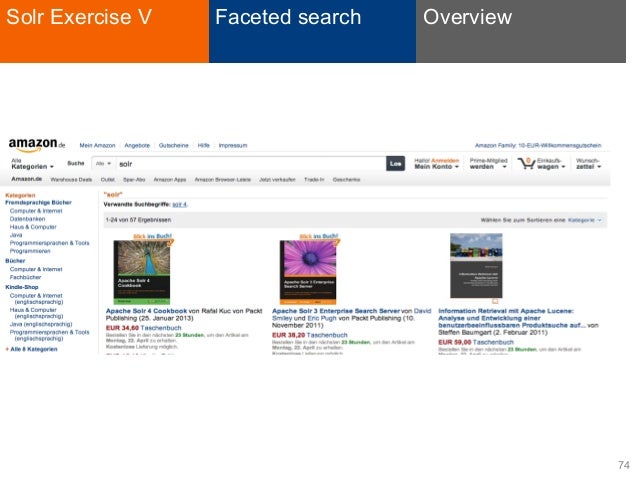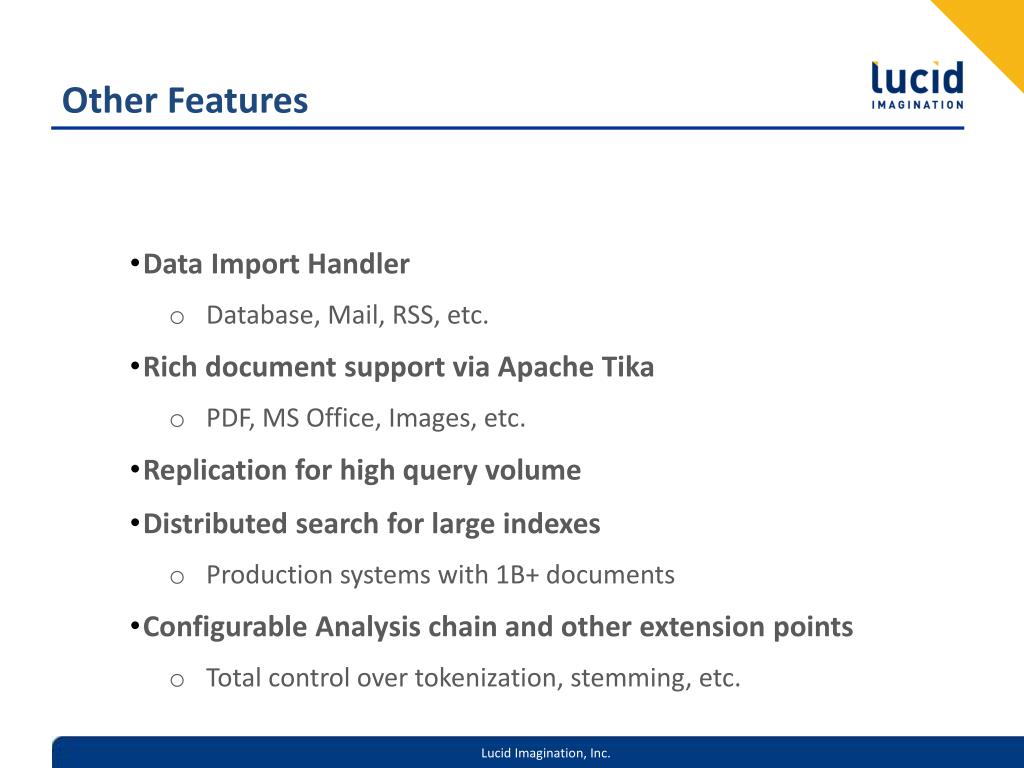

GroupResult = new TopGroups(groupsResult, allGroupsCollector. TopGroups groupsResult = c2.getTopGroups(docOffset) S.search(new TermQuery(new Term("content", searchTerm)), c2) Cache was too large must re-execute query: Cache fit within maxCacheRAMMB, so we can replay it: SecondPassGroupingCollector c2 = new SecondPassGroupingCollector("author", topGroups, groupSort, docSort, docOffset+docsPerGroup, getScores, getMaxScores, fillFields) ĪllGroupsCollector allGroupsCollector = null ĪllGroupsCollector = new AllGroupsCollector("author") Ĭ2 = MultiCollector.wrap(c2, allGroupsCollector) S.search(new TermQuery(new Term("content", searchTerm)), cachedCollector) Ĭollection topGroups = c1.getTopGroups(groupOffset, fillFields) Typical usage looks like this (using the CachingCollector):įirstPassGroupingCollector c1 = new FirstPassGroupingCollector("author", groupSort, groupOffset+topNGroups) ĬachingCollector cachedCollector = CachingCollector.create(c1, cacheScores, maxCacheRAMMB) Sharding is not directly supported, though is not tooĭifficult, if you can merge the top groups and top documents per.Unlike Solr's implementation, this module cannot group byįunction query values nor by arbitrary queries.The group field must be a single-valued indexed field.įieldCache is used to load the FieldCache.StringIndex for this field.Results are returned as a TopGroups instance. Way you only run the query once, but you pay a RAM cost to (briefly) than those detailed in this guide, see the official Apache Lucene search. Run you may want to use the CachingCollector class, whichĬaches hits and can (quickly) replay them for the second pass. This guide provides an overview on building Lucene queries for use in the. Gathers the top groups, and the second pass ( SecondPassGroupingCollector) The implementation is two-pass: the first pass ( FirstPassGroupingCollector) withinGroupOffset: which "slice" of topĭocuments you want to retrieve from each group.maxDocsPerGroup: how many top documents within each.This can be different from the group sort. withinGroupSort: how the documents within each groupĪre sorted.Paging, where you might show 5 groups per page. For example, 3 means you'll get 7 groups back groupOffset: which "slice" of top groups you want to.ForĮxample, 10 means the top 10 groups are computed. topNGroups: how many top groups to keep.Specify relevance group sort, then the first group is the one Is the one with the lowest price book within it. ForĮxample, if you specify "price" (ascending) then the first group This example searches for hotel names with the term 'hotel' in them, but not 'motel'. Fielded search scope individual, embedded search expressions to a specific field. Purposes, each group is "represented" by the highest-sortedĭocument according to the groupSort within it. On an empty search string, the count will be all documents in the index (50 in the case of hotels-sample-index).

Have this field are grouped under a single group with groupField: this is the field used for grouping.įor example, if you use the author field then each.For example, if you group by the authorįield, then all documents with the same value in the author With the same value in the specified single-valued group field are This module enables search result grouping with Lucene, where hits


 0 kommentar(er)
0 kommentar(er)
